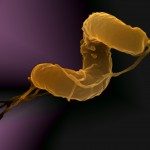Link to Pubmed [PMID] – 32632867
Link to DOI – 10.1007/978-1-0716-0459-5_14
Methods Mol Biol 2020 ; 2134(): 149-160
The study of pathological processes is often limited to in vitro or ex vivo assays, while understanding pathogenesis of an infectious disease requires in vivo analysis. The use of pathogens, genetically modified to express with luminescent enzymes, combined to charge-coupled device (CCD) cameras, constitutes a major technological advance for assessing the course of infection in an intact, living host in real time and in a noninvasive way. This technology, also called bioluminescence imaging, detects the photons emitted from biological sources of light through animal tissues. Here, we describe the method we developed to monitor leptospirosis in a mouse model, by following in a spatiotemporal scale, the dissemination and spread of leptospires. These bacteria have been genetically modified to express the firefly luciferase, which produces light in the presence of the substrate D-luciferin. This useful and accessible technology facilitates the study of the kinetics of blood and tissue dissemination of live leptospires, and the pharmacological impact of treatments and host directed therapeutics.

